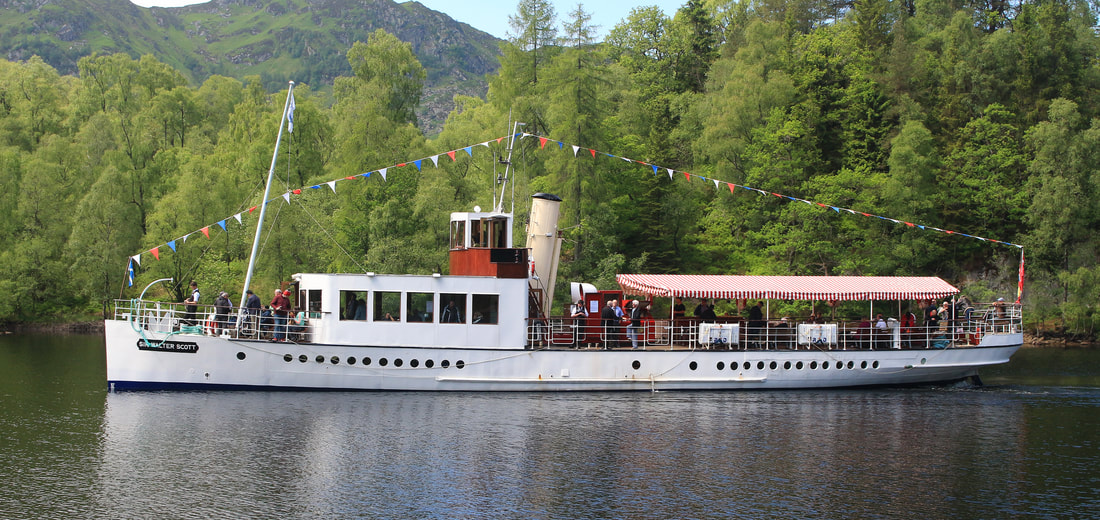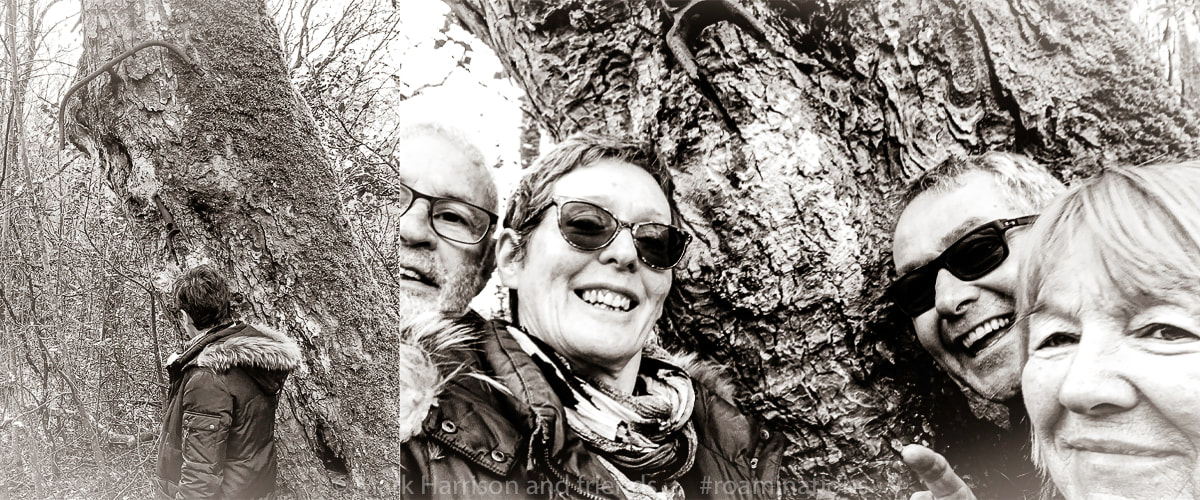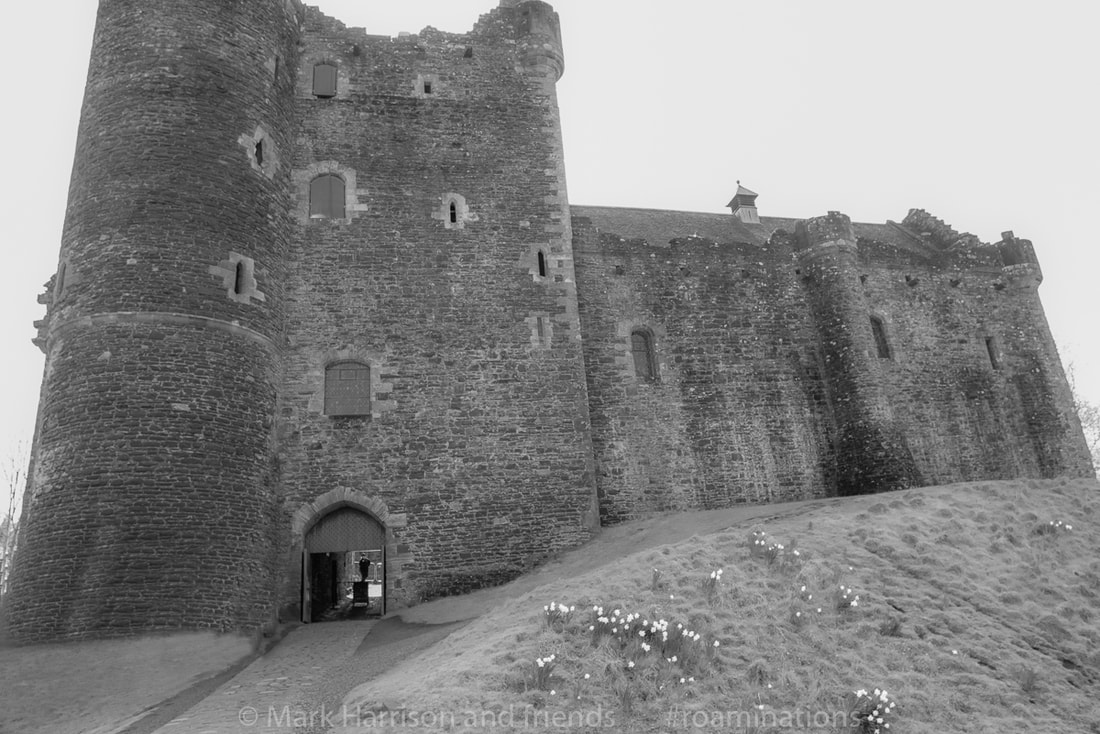|
What can I say about Scott that I haven't already? Well, quite a lot as it happens. So I'll reveal some of it first and then account for the intense 24 hours we spent together before heading off to Glencoe. In the same way that the Banburys and the Eriksens paint a great picture of Scots abroad (in the broadest sense of abroad[1]), the Mckee enthusiasm comes across in their descriptions of great adventures and in the sweeping pictures they paint, literally and photographically. If Scott creates one of his all too infrequent picture stories about North-Eastern Australia or far Western Scotland I immediately want to go there. The very next day. They are the places most people don't usually think of going for a selfie on a bucket list. St Kilda, Okains Bay, Geraldine, a 60s balcony in Port Douglas[2]. There are pictures of the ordinary that somehow don't look ordinary. For our grand tour of Ecosse, Loch Lomond was verboten as was the NC500 and probably Skye. Scott is the consummate salesperson so there was always a good reason and a more beguiling alternative. In fact so many of the beguiling were recommended that we had to sneak past a few of them to get to our daughter Kate's wedding on time. But first we were about the meet Christine and Scott was about to meet Shelley-ann (Shan) for the first time at their beautiful home bursting with the fabled Scottish hospitality. A feast was in preparation. Out came the maps and Scott's seemingly bottomless reservoir of knowledge about Scotland. We knew our next major milestone was to be the Oban to Mull ferry. We didnae make the Arduaine gardens sadly, for reasons that will be come obvious in the next instalment. As the call of the glen beckoned, Christine and Shan decided to leave the old farts to it. A wise but sad decision. The world is a better place for the philosophical decisions we made between midnight and 4 am. I was mightily relieved 3 or 4 hours later when our hosts persuaded us of the folly of attempting to explore the Trossachs in Campy. "We'll go in our car," Scott insisted. What a trooper. "You can set off when we get back. You'll have plenty of time to get to Glencoe." We had a booking to park Campy at the National Trust for Scotland HQ there. En route to the spectacular Duke's Pass, over which I'm very relieved I didn't have to pilot Campy with a tender head, Scott pointed out Lake Menteith. "Only Lake in Scotland," he said with a grin. I wasn't going to be the one to challenge him on that expedition. Lucky me because I eavesdropped a bit of Facebook banter between Mr Mckee and a friend a few days ago (more than a year later) that went something like this: "Some Scottish bloke (I won't mention his name) once told me that Katrine was not a loch but a lake. Or was I still drunk on that early new years day?" quoth Scott's mate. The putdown was quick and merciless: "Naw, that guy I told must have been very drunk, because it’s Menteith that’s the lake ... ." There were Loch Achray and Loch Katrine to come.  I mentioned before that Scott tells a story with such enthusiasm it just comes out better without even embellishing the facts. This ship involves an extraordinary story in its own right. I have accredited the pic to its rightful owner[3] and have flagrantly copied and pasted the words below ... SS Sir Walter Scott is a small steamship that has provided pleasure cruises and a ferry service on Loch Katrine in the scenic Trossachs of Scotland for more than a century, and is the only surviving screw steamer in regular passenger service in Scotland. It is named after the writer Walter Scott, who set his 1810 poem Lady of the Lake, and his 1818 novel Rob Roy around Loch Katrine. In 1859 Loch Katrine became Glasgow's main water supply, connected by aqueducts and tunnels to the city more than 30 miles (48 km) away through a hilly landscape. The Trossachs became very popular in the Victorian era, and there were early steamship services on the loch. The Loch is surrounded by wooded mountains, and has romantic historical connections including the birthplace of the outlaw Rob Roy MacGregor. Queen Victoria had a holiday house built overlooking the loch. William Denny and Brothers built Sir Walter Scott as a "knock-down" ship; that is, it was assembled with bolts and nuts at Denny's shipyard at Dumbarton on the River Leven, the pieces numbered and dismantled again, transported in pieces by barge up Loch Lomond and overland by horse-drawn cart to Stronachlachar pier on Loch Katrine and there rebuilt with rivets and launched.[1] Denny's assembled Sir Walter Scott at their yard in 1899 and completed its reassembly and launch on the loch in 1900. All ships in the UK must record a measured mile for seaworthiness. Sir Walter Scott completed its measured mile on the Firth of Clyde when bolted together, before being disassembled, transported to Loch Katrine and riveted together again. Its original cost was £4,269, which included a delivery charge of £2,028.[2] Sir Walter Scott weighs 115 tons, is 110 feet (34 m) long and has a 19 feet (5.8 m) beam. It is powered by its original three-cylinder triple-expansion steam engine and has two locomotive-type boilers[clarification needed] which until the end of 2007 were fired by solid fuel fed into the firebox by a stoker. At a time when most steamers changed to oil-fired boilers, the Sir Walter Scott kept using solid fuel to meet the requirement of ensuring that Glasgow's water supply is not polluted, changing from coal to coke to reduce air pollution. In a refit at the end of the 2007 season the boilers were altered to run on biofuel. During this refit, the superstructure was rebuilt and a forward deck cabin was added.[3] Some consider the modified superstructure an abomination, destroying the classic lines of this Victorian era steamer. The vessel has a crew of five.[1] I can't improve on that, nor can I faithfully reproduce my friends' enthusiasm. The above text came from Wikipedia to which Shan and I make regular contributions so I won't feel too guilty about that, either. As we left Loch Katrine, Shan and I both detected a conspiratorial grin pass between the Mckees, followed by an imperceptible nod. Some obfuscation was involved during the next part of the trip with Scott veering off occasionally on to side roads until we hadn't an idea where we were. Then we walked for a while until he proudly stopped. "Take a look at that," he whispered in Glaswegian dialect half drowned out by a hand held up to his mouth to prevent the announcement carrying too far. Shan was the first to spot what he was on about:  Apparently the existence of the tree is one of the worst kept secrets in Scotland but its location is withheld as a matter of national pride by anyone who knows where it is. This is probably a good idea as the area was peaceful and undoubtably a terrible hazard for the unsuspecting cyclist. Returning to the car, Scott and Christine suggested one last detour to the town of Doune. "What is there," we chorused. "Doune Castle," they responded. At this point Christine sensed we were having a mental block. "It's where they filmed Outlander[4]." "I've heard of it," Shan ventured. It was obvious I remained none the wiser, being a complete ignoramus about historical dramas ... "... and the battlement scene from The Holy Grail," Scott nudged the conversation. "You mean Monty Python and the Holy Grail," I ejaculated. "Aye." If you were to ask me to identify my favourite scene from the whole of Monty Python, I wouldn't have to think for more than a second. "Holy shit, that's where they filmed the coconut scene," I exclaimed as the castle came into view.  For those who think this place is best known as the filmset for Outlander, indulge us oldies briefly to check out its other starring role ... [5] A year down the line and we'll also be catching up on Outlander. And so back to Campy for us to continue our journey. On our return to Buchlyvie Scott gave us directions to get us back to the most scenic Campy-friendly route to Glencoe. First of all we had to retrace our footsteps alongside Loch Inchmahome. Just stirring. Looking forward to a Mckee hike along our Ridgeway. Would that Cromwell's cannonball, lodged in our Norman church, could be a fossilised coconut. Coming up: A sad place, a mishap, stonking scenery and a proper island. Endnotes:
[1] Anything from the Trossachs to Bordeaux and even Melbourne [2] I made this one up because he never seems to actually say where he is ... it often just unfolds [3] Photo Comp 2018 entry: In Highland Waters - the SS Sir Walter Scott on Loch Katrine in Scotland, by Colin Smith [4] An historical series that had been aired on Channel 4 amongst others [5] I do love a completely pointless argument. The Pythons excelled at them and this was the greatest of the lot
0 Comments
Leave a Reply. |
AuthorMark Harrison - making travelling an adventure Archives
April 2024
Categories |
 RSS Feed
RSS Feed